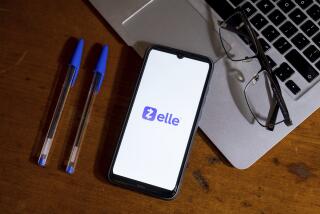Review: HTC Droid DNA’s flaws overshadow super display [Video]
The HTC Droid DNA has one of the most impressive displays of any smartphone, but even that doesn’t make up for some bothersome problems the device has.
The Droid DNA falls into the category of jumbo-sized phones, but its 5-inch screen is different from the rest because it has 1080p full HD. It has 1,920 by 1,080 pixel resolution, and it also has a whopping 441 pixels per inch density. To put that in context, the iPhone has just a 326 ppi.
Everything on this display is crisp and sharp. The Droid DNA has by far the best display of any Android I’ve used and quite possibly the best display of any smartphone overall.
PHOTOS: Top 10 tech products of 2012
But powering that display seems to come at a price. The Droid DNA has a short battery life. I went through two full battery cycles with the phone -- watching videos, playing games, surfing the Web, and of course, going on Facebook -- and I wasn’t able to get five hours of battery either time.
That’s a shame, really, because the device was great for all the things you’d want to do on a smartphone. Surfing the Web on so much real estate is perfect, videos and movies looked excellent, and books are great to read because of the large display.
Perhaps what stood out the most were magazines. Everything looked bold and sharp. We joked that magazines haven’t looked this good since they went to glossy paper.
The Droid DNA is also adept at taking pictures and video. Both of its cameras shoot video in 1080p HD. The front camera is fine for self shots and Web chatting, but what you get out of the rear 8-megapixel camera are really sharp photos and solid videos.
The only task I didn’t enjoy as much on the Droid DNA as I do on other phones, particularly on the 5.5-inch Samsung Galaxy Note II, is playing games. For some reason the games I tried wouldn’t display fully on the device because of what seems to be a software issue. The games also seemed to lag more than they did on the Galaxy Note II, despite the Droid DNA’s 1.5 GHz quad-core processor.
Additionally, there were some nagging software issues on the phone, which runs on Android 4.1 Jelly Bean. For example, the Netflix app often doesn’t seem to work right or will freeze up the entire phone. There weren’t any other major problems, but one would expect most top-of-the-line devices nowadays to run smoothly.
A few more kinks come out on the Droid DNA’s exterior. Its design is really bold, stylish and modern with its curved display, rubbery black back cover, streaks of red and cool metallic buttons. It’s also not too wide for a 5-inch phone. But all that is disrupted by three things that really make you wonder how HTC can design so much of the phone so well and then drop the ball on little things.
For starters, the power button is at the top of the Droid DNA -- that’s not where you should put a power button on a 5-inch screen phone. Also, the charger port is covered by one of those flaps that feels like it could break off at any second. Besides that, the cool look of the all-black back cover is interrupted by a white strip that holds all the phone’s serial and product numbers. However, that might just be on the test model we got; it seems like it could be easily peeled off.
The Droid DNA also has some other nice features. It’s designed to be charged wirelessly when placed on a charging pad, sold separately. It’s also NFC enabled, meaning you can hold it up to another Android to send photos and other files quickly.
Overall, I really want to love the Droid DNA, but its mix of issues hold the phone back. But if you’re looking for a jumbo phone and don’t mind having poor battery, the Droid DNA comes with 16 GB of storage and costs $200, which is $100 less than its rival the Galaxy Note II.
ALSO:
Verizon rolling out Galaxy S III Jelly Bean upgrade
Analyst lowers iPhone, iPad sales estimates; Apple shares fall
Wal-Mart puts iPhone 5 on sale for $127; are iPhone sales dragging?
More to Read
Inside the business of entertainment
The Wide Shot brings you news, analysis and insights on everything from streaming wars to production — and what it all means for the future.
You may occasionally receive promotional content from the Los Angeles Times.











